Wild Boar - One of the most widespread game species out there
Wild Boar - One of the most widespread game species out there
The common wild boar is one of the world’s most widespread game species and equally one of the most prolific. Wherever they are found, wild boar are intensively hunted. Often, this is simply a social requirement, since stocks would otherwise grow exceedingly large and cause inestimable damage to agricultural land.
The common wild boar is one of the world’s most widespread game species and equally one of the most prolific. Wherever they are found, wild boar are intensively hunted. Often, this is simply a social requirement, since stocks would otherwise grow exceedingly large and cause inestimable damage to agricultural land.
The original non-domesticated form of the wild boar actually comes from Europe, Asia and North Africa. But the species has spread alongside humans and is now found almost everywhere. Wild boar occur either as the true wild boar species or as feral domestic pigs, which are genetically the same animal. Regardless of the type of wild boar found locally, they are all hunted in very similar ways. Wild boar are intelligent and strong and, unlike deer, will readily take on both humans and dogs.
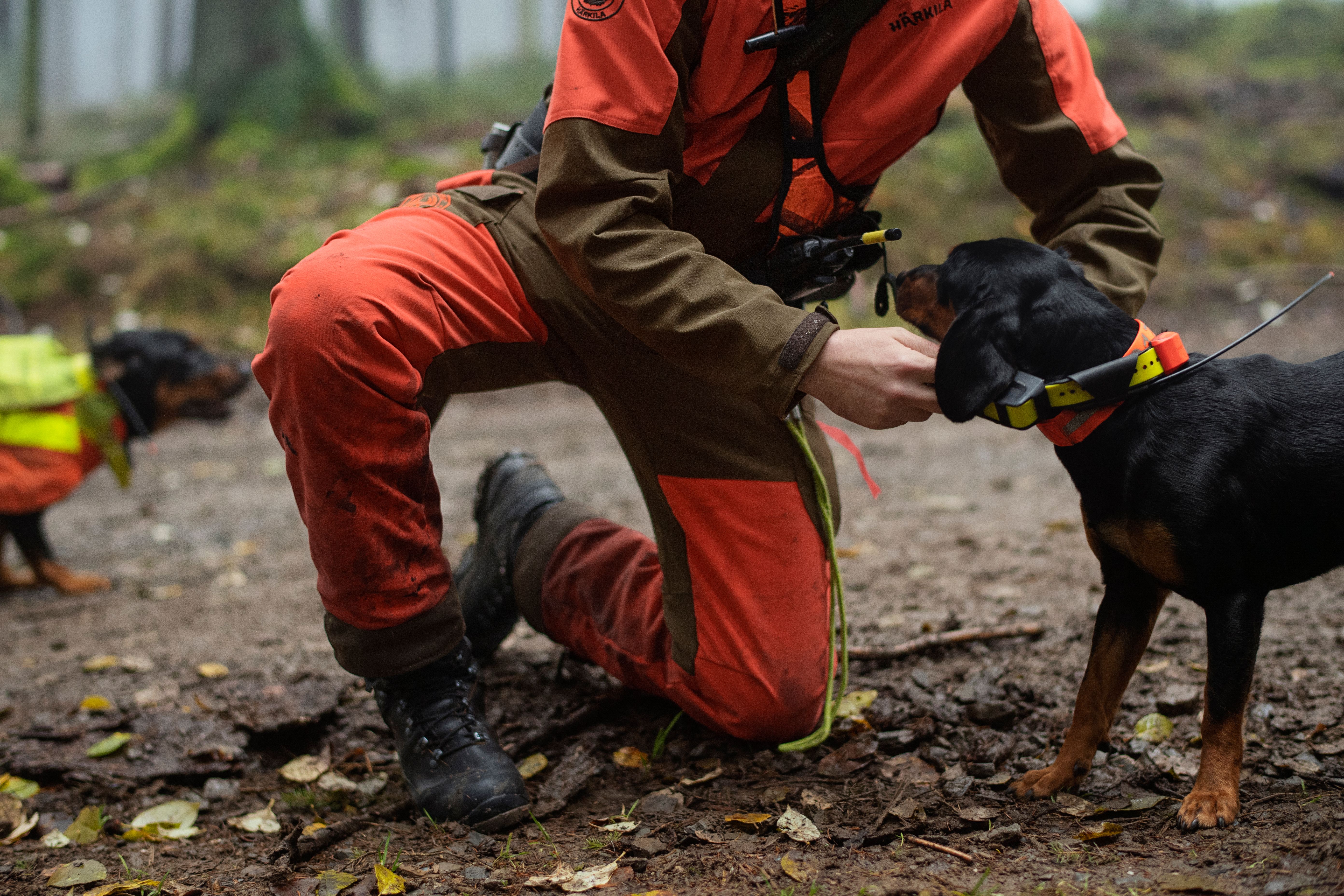
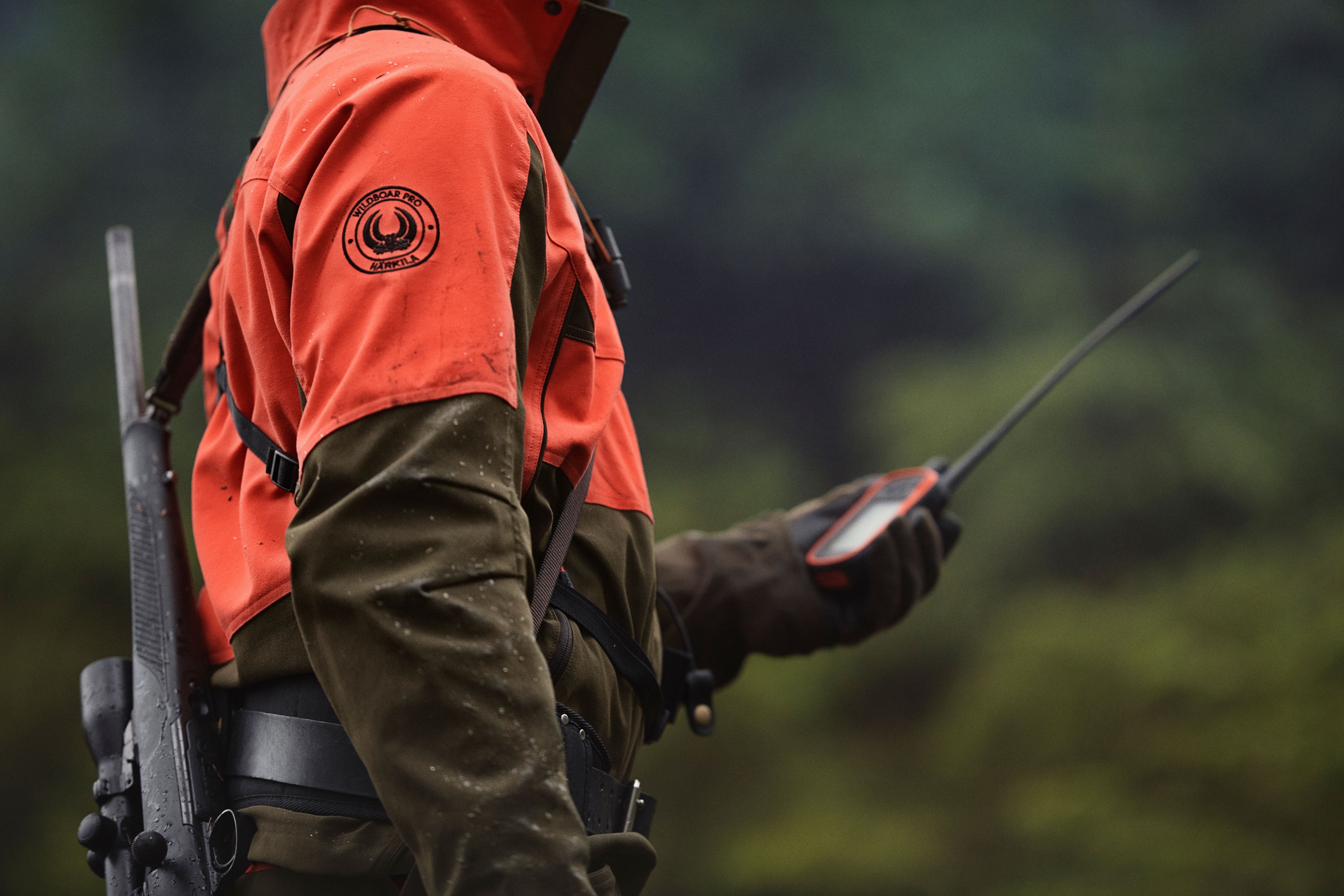
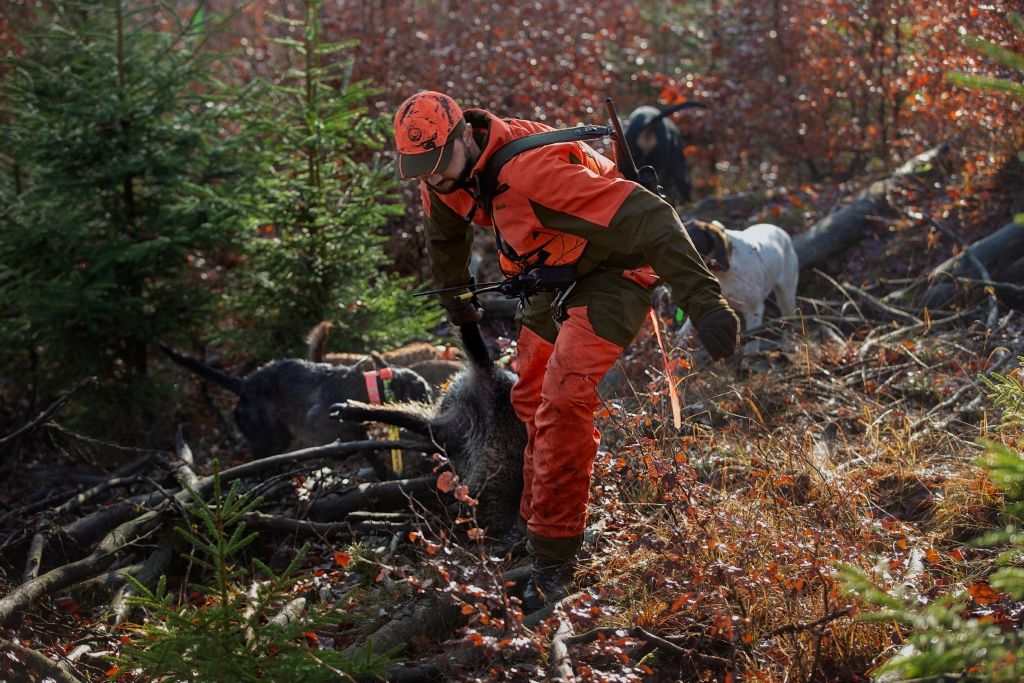
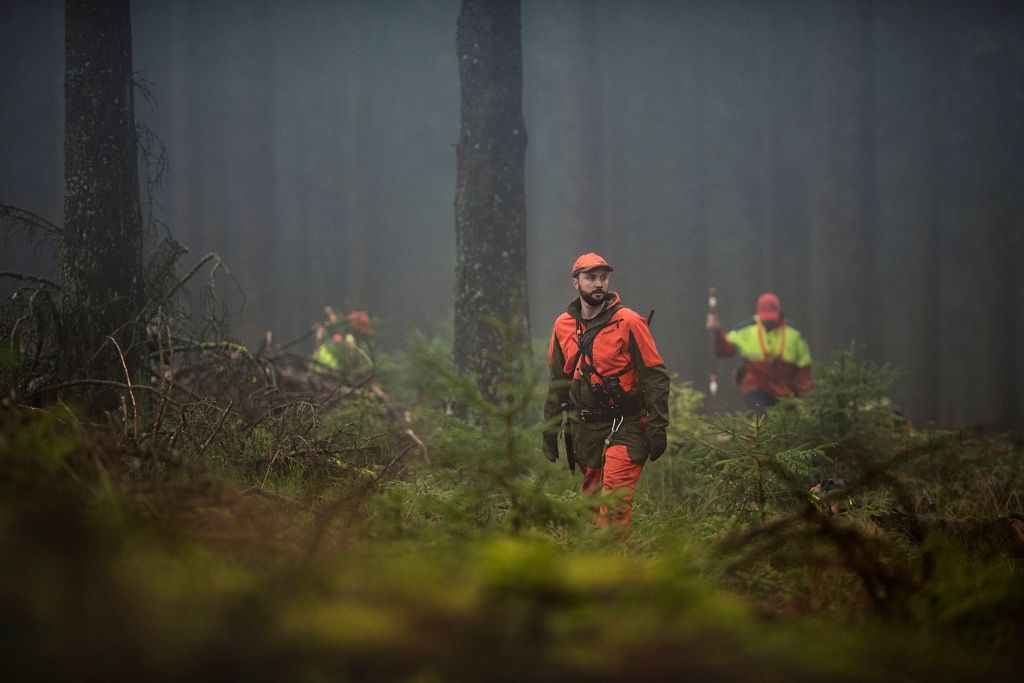
“It is relatively easy to go wild boar hunting in many parts of the world.”
Three ways to hunt
There are in essence three basic ways to hunt wild boar. One is to shoot them where they forage in fields or at established feeding sites. The second is to stalk them, and the third is to drive them, using drivers and dogs and take them with strategically positioned guns.
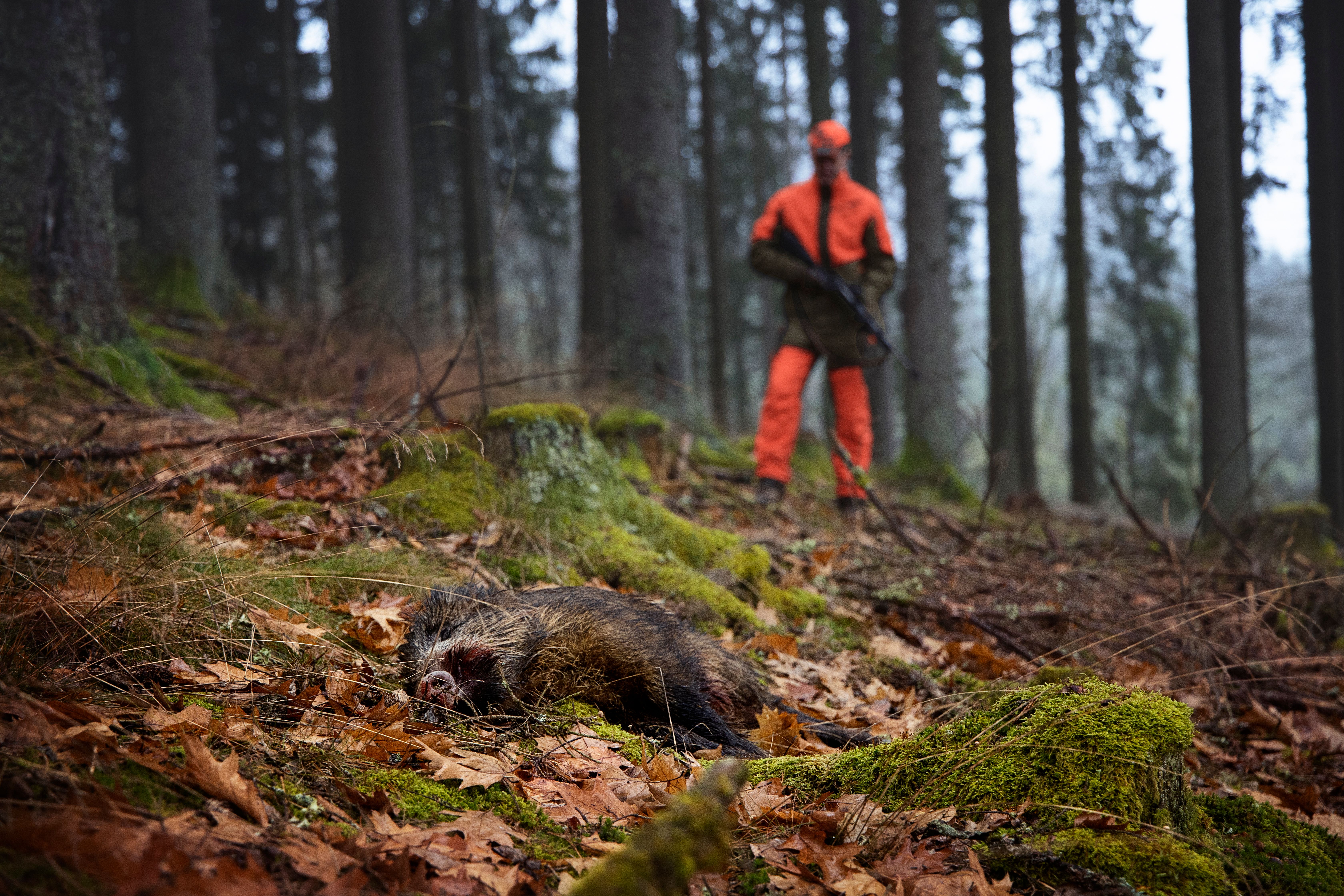
Since wild boars are highly intelligent animals, constantly adapting their behaviour to circumstances, they are nocturnal in areas of intensive hunting, which is almost everywhere they occur. So, regardless of whether you are planning to establish a feeding station as a shooting site, or want to try stalking across the fields, you must be prepared to hunt at night. This imposes certain requirements on both the hunter and his or her equipment. Driven hunts, on the other hand, take place in full daylight. Here the challenge is primarily to master the art of shooting accurately at an animal moving at high speed.
The preferred modes of hunting in particular locations vary in line with hunting traditions around the world. In most places, boar are shot mainly from static positions around feeding sites in fields at night. Drives are most common as a supplement to nighttime hunting in Europe, Africa and certain Asian countries. In a number of places, notably where feral pigs are perceived to be an invasive nuisance species, extensive hunting to control populations takes place, often from helicopter. This is common in, for example, the southern United States and Australia, where several million hogs are killed in this way each year.
Nocturnal hunting
The commonest form of nocturnal hunting for wild boars is stand hunting under moonlight, either at a purpose-built feeding site or in a field where they forage. In principle, this can take place year-round, but is most widespread in the autumn and winter. In Europe, many wild boars are shot from hunting ladders or towers at night.
This form of hunting requires a lot of patience on the part of the hunter. Typically, several hours are spent sitting still and waiting for each boar that is taken. This can be exciting, as the boar are usually cautious and hesitant in their movements and often stay close together. This makes it difficult to pick out individuals and is a test for the hunter’s nerves, when the sounder, or herd, dances merrily around the site over a long period without presenting much opportunity for a shot.
The hunter rarely gets the chance of more than one shot for each group of animals, since, once disturbed, they will bolt from the site at the speed of light. Shot placement is therefore crucial.
As a wild boar hunter, you need to be ready for hours of work in the dark to find, haul out and prepare your kill for eating. If going out on several nights consecutively, it can be a good idea to try to alter your circadian rhythm a few days in advance, by going to bed and getting up later than normal. Otherwise, one of the biggest challenges is staying awake at your post as the hours drag on.
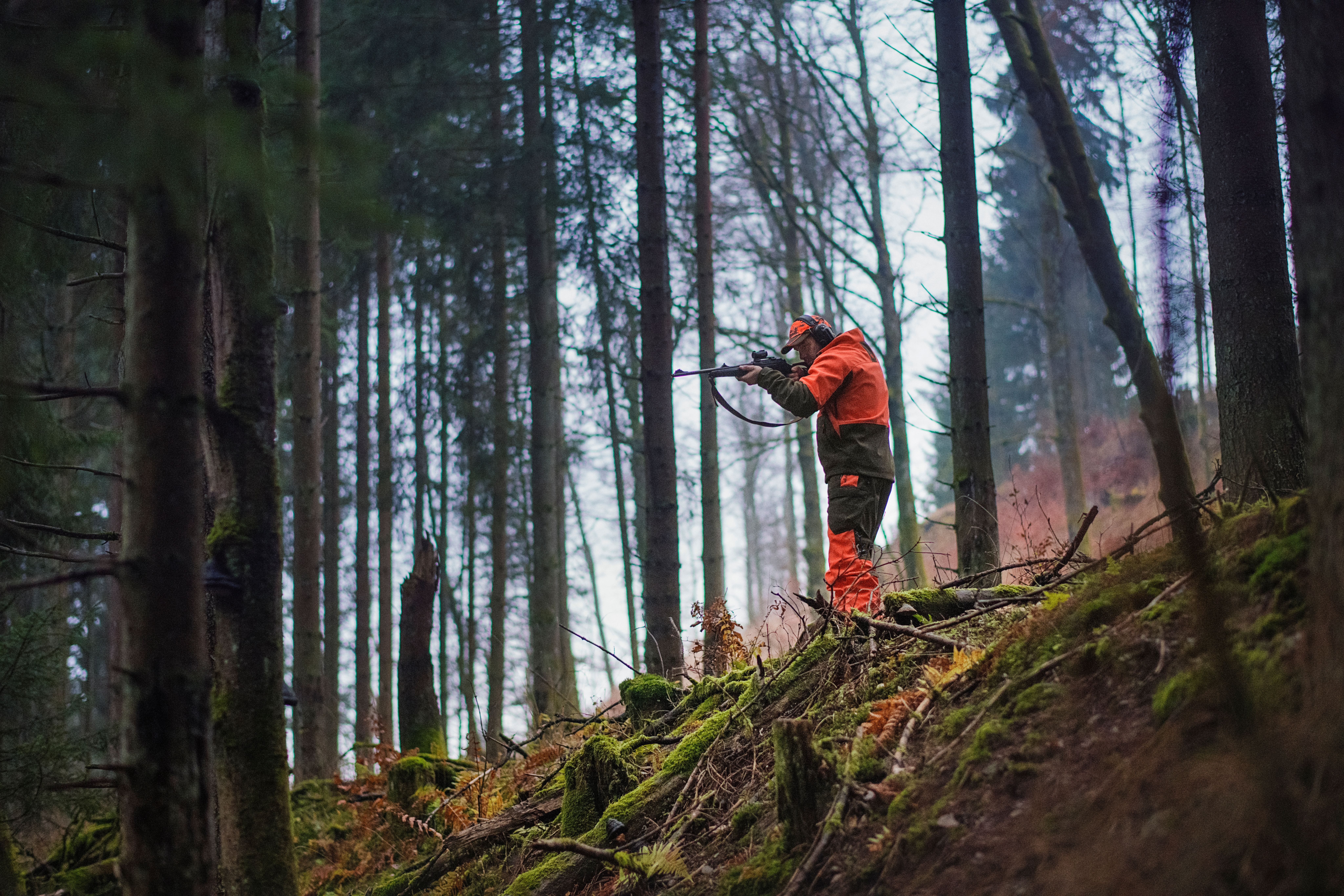
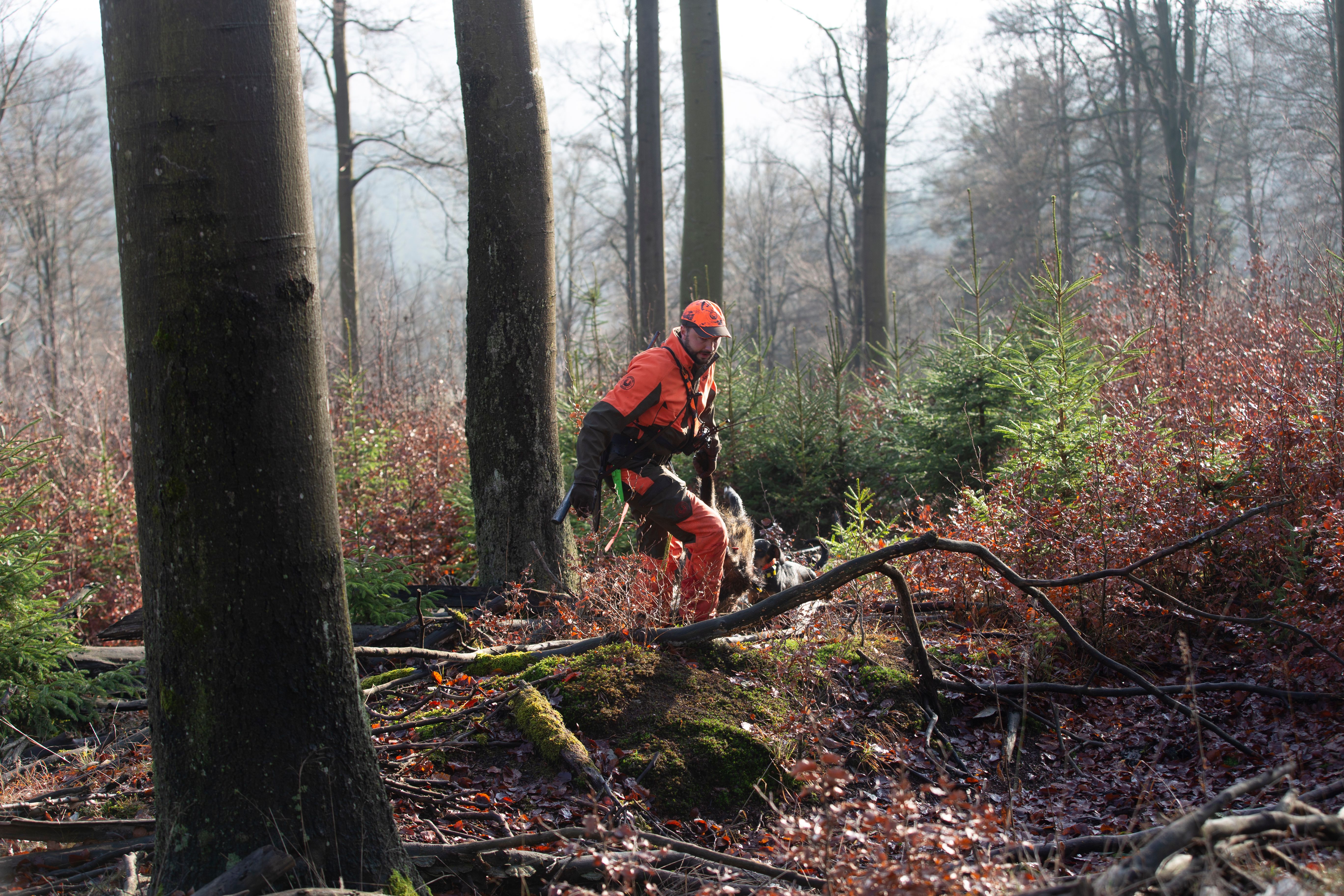
If you are responsible for all the hunting at a feeding station, it is a demanding activity that requires thorough knowledge of the wild boar in the area, as well as a lot of equipment in the shape of feed dispensers, lures, trail cams, hunting towers etc. It is one of the most equipment-dependent types of hunting.
Stalking wild boar
A somewhat more specialized form of nocturnal hunting for wild boar is to stalk them in the fields. This is a very physically and mentally demanding activity that requires a lot of hunting prowess from participants.
Stalking in moonlight is recommended if the hunting grounds are large enough and include several spots that are especially attractive to the wild boar. Snow can make a nocturnal hunt an almost magical experience in the surreal light of a winter landscape.
Another, even wilder, form of hunting that has become more popular recently is stalking in crop fields in summer. The wild boar are attracted by different crops at specific stages of growth. In the cornfields, this is during the few days in which the kernels are green and filled with a sweet milky juice. In this form of hunting, you hunt largely by sound and get close to the animals using a combination of stalking techniques and the ability to imitate their own sound and movement patterns. Bare feet and underwear only are often the dress code here!
Driven hunt
From the shooters’ perspective, a driven hunt is incredibly simple and exciting. A hunt leader assigns each shooter their spot and typically reviews where the drive will be coming from and in which directions it is safe to fire. The shooter's job is then primarily to make his or her presence known to fellow hunters so everyone knows where the others are, and otherwise to stay in place and wait – ready for action at a second’s notice – until the game are driven from the beat.
When the opportunity arises, lightning reactions are essential. The purpose of this exercise is to shoot the right animals, which, for wildlife management reasons, typically means shooting primarily the youngest animals and the boars.
If wild boar arrive in a group, there will often be a leading sow followed by juveniles and youngsters from previous years. In most cases, hunters avoid taking the leading sow by initially prioritising the smallest animals in the groups. A few other basic rules are not to shoot at the adult pig typically leading the group, and to shoot brown pigs – which are always young animals – in preference to black and grey ones.
Boars often arrive alone, but driven hunting offers no guarantees, so it is important to keep your wits about you. The only sure ways to reliably recognize a lone pig as a boar are its large canines and distinctive male sex organs.
Shooting and training
When shooting at running game, the closer the hunter is to the game at the moment of firing, the greater the accuracy. At a distance of 25-30 metres, you only need to shoot a few centimeters ahead of a running wild boar. At longer distances, this form of hunting becomes a demanding exercise in shooting technique.
Standing or sitting still and waiting attentively, you can quickly get cold and tired. But if a whole lot of things happen suddenly and if you are not ready for action, your opportunities for making the most of your chances are considerably reduced. It is important to stay warm, to de-stress the body as much as possible while waiting, and to optimize your 'hunting luck' by becoming proficient in the special kind of rifle shooting that a driven hunt requires.
Hitting running targets is much more about training than about equipment. You simply cannot make your reactions sufficiently routine without practising diligently on the shooting range or at the shooting simulator. On the equipment side, the most important details for the hunter are warm clothing, a powerful rifle and a scope with a wide field of view and a red dot.
For optimizing your chances, a comfortable rucksack chair and a three-legged shooting stick are a couple of very sensible investments. The shooting stick offers better chances of hitting game that is sneaking out a little further away. It also allows the rifle to be rested without tiring out your arms.
Signal-orange detailing on hunters’ and drivers' clothing is extremely important for obvious safety reasons. Remember that there must be clear orange detailing on the garment that is visible from all angles. An orange hatband or armband is not sufficient on its own. If the hunters stand still, the boar will not see them. This is true regardless of how much signal colour they are wearing.
Where can you hunt?
It is relatively easy to go wild boar hunting in many parts of the world, since wild boar are intensively hunted in the vast majority of countries that have viable stocks. You can simply purchase a place on a driven hunt. There are plenty of hunting travel agencies and local hunt organizers who offer these online. Hunting trip providers also offer a wide selection of nocturnal hunts – especially in Europe.
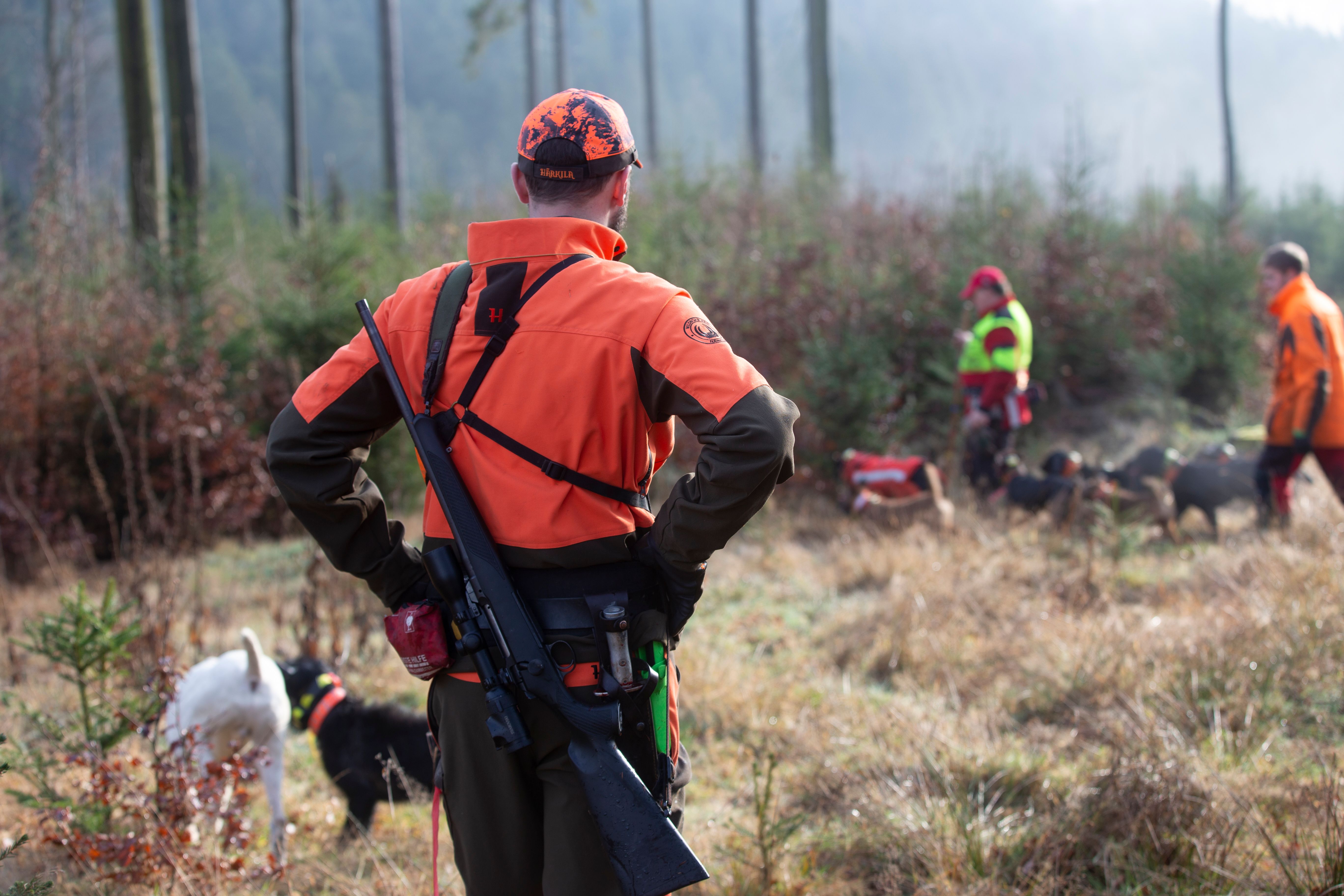
Participation in other, more specialized forms of hunting requires greater contact with local hunters, who organize the hunt themselves. Alternatively, in many places it is relatively easy to rent your own hunting grounds and take care of the entire hunt yourself. In summary, no other big game species is anywhere near as easy and inexpensive to go hunting for as wild boar.
Good advice
- Keep still! The wild boar’s vision is much better than yours. If they see or hear you, they will rarely hang around to make sure.
- Dress up warmly, or you will freeze. If you freeze, you will be unable to keep still enough to hunt wild boar.
- When hunting in company, don’t forget signal colours. Visibility to other hunters saves lives. The wild boar on the other hand cannot identify signal colours.
- Wild boar hunting can be hard and often dirty work. Expect to get dirty! Pick hard-wearing garments that are easy to clean. Layered clothing that can be varied to match the level of activity is often a good choice.
- Protect yourself from attacks, in the same way foresters protect themselves, with cut-resistant clothing. Protect your inner thighs and crotch from the wild boars’ teeth.
- Better one shot too many than one too few. Wild boar can withstand being shot far better than, for example, deer.
- Bring a large knife to complete the kill in cases where an extra rifle shot is not possible. But note that using a knife for killing is, as a rule, for emergencies only. A wounded wild boar is dangerous.
- If possible, use a night-vision rifle scope and a thermal spotter. These significantly increase the safety of firing and of shot placement, and are a great help if you need to search afterwards.
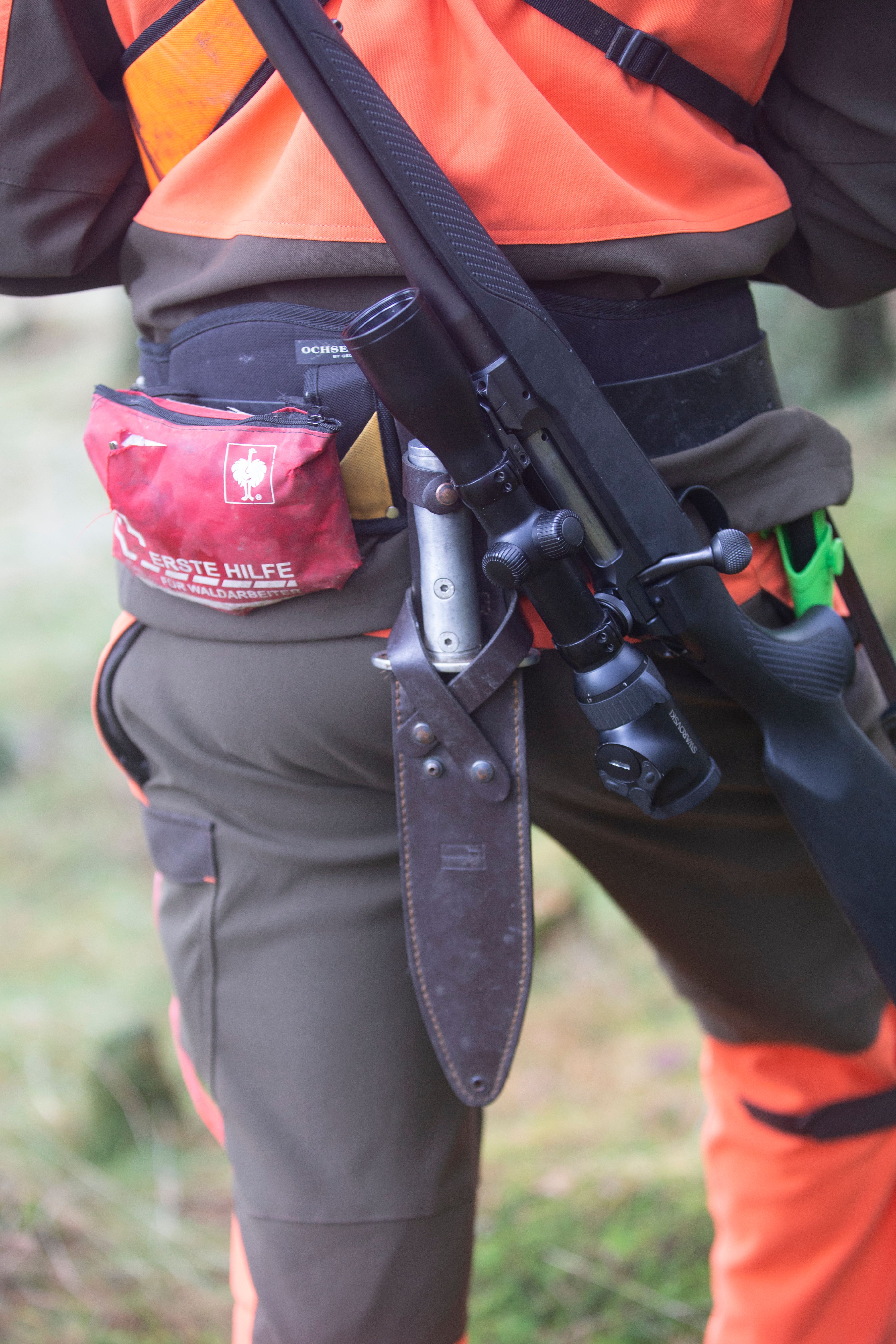
Test for trichina
Wild boar meat is excellent eating. Juvenile and yearling boars and sows taste superb, with red flesh like beef. The meat is less fatty than farmed pork and can, in principle, be used like beef. Sexually mature boars are not great tasting, but are widely used in salami etc. Wild boar can, however, carry trichina worms (Trichinella spiralis), which is a parasite that can also affect humans. Wild boar meat should always be tested for trichina before eating. The test is simple, cheap and close to 100% accurate.
European wild boar
There are many sub-species of wild boar across most of the Northern Hemisphere. In Europe, fully grown boars – which in principle never stop growing – weigh from 50 kg in the southwest of the continent to more than 300 kg in the southeast. In most of Western and Central Europe, a boar of 130 kg would be considered very large. For reasons that are unclear, the Swedish stock produces boars weighing as much as 250-300 kg.
In addition to the fine and durable winter skins, hunters often retain the boar’s teeth as a keepsake. It is the large curved canines in the lower jaw that grow longest. In most of Europe, these teeth rarely exceed 20 cm in length. However, in southeastern Europe and across into the Middle East and Central Asia, they can reach close to 30 cm.
Wild boar hunting in numbers
Since a wild boar sow can have more than 10 piglets in a litter, wild boar stocks have the ability to grow faster than any other game animal. It is not uncommon for a wild boar population to double in a single year. Agricultural trends towards larger fields with crops such as maize, which provide food and cover for much of the year, have caused wild boar populations to explode in many places around the globe.
In Sweden, all wild boars are descended from fewer than 20 animals that escaped through a fence in the 1980s. Today, the stock stands at more than 500,000 animals and Swedish hunters shoot in excess of 100,000 wild boars a year. In Germany, hunters typically kill more than 500,000 wild boars each season, and there are also huge culls in many other countries across Europe. In the United States and Australia, wild boars are primarily feral domestic pigs and are culled in their millions every single year.
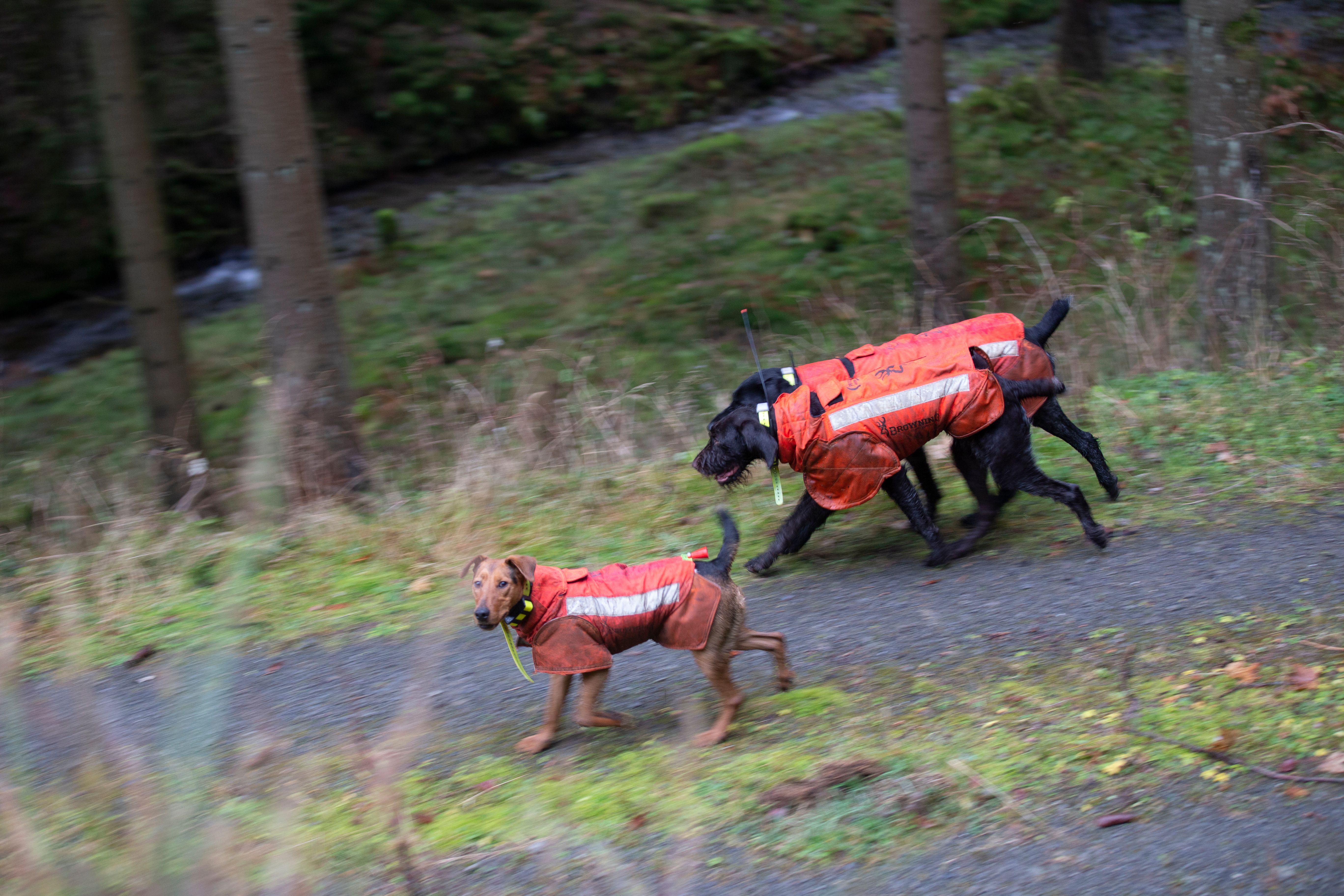
Attacks
Wild boar is one of the few European game species that often chooses to counterattack if threatened – for example, if shot. When this happens, both large and small boars will make use of their lower canines. The boar will strike sharply to the side and raise its head when it makes contact.
To a person standing, this can cause, in the worst case, a deep wound to the inner thigh from somewhere above the knee up to the crotch. This type of injury necessitates a number of hospital admissions every year and not infrequently causes fatalities among hunters and hunt personnel. Hunting dogs are inherently more vulnerable to wild boar attack than hunters. They can best be shielded by a protective vest developed for the purpose.